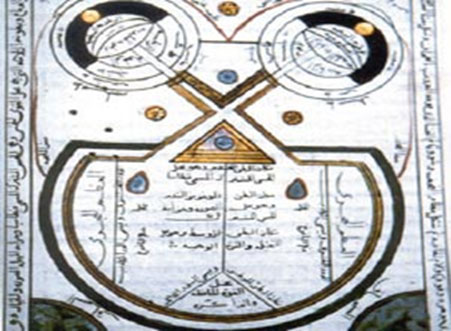Mixed Approach

During the third stage of this thriving medical history within the Islamic world, and around the fourteenth century, a new type of medical writing emerged. The authors were religious scholars, rather than physicians.
Their aim was to preserve the wealth of knowledge and heritage compiled and practiced by Muslims over the years from fading away before the rapidly rising Western society. (National Library of Medicine, 1998)
Their writings all carried the same title: Al-Tibb Al-Nabawi (Prophetic Medicine) and was intended as an alternative to the Greek-based medical science. Most famous among them were the writings of Al-Jauziyah, As-Suyuti, and Az-Zahabi which are the base for what is today referred to as ‘Islamic Medicine.’
Al-Jauziyah’s recommendations for approaching the patient reflected the preserved notion of balance and holistic approach taught by early Muslim physicians. He advised physicians to investigate all areas of their patient’s life.
Also to research the real cause behind the disease, examine the patient’s feelings, mood and lifestyle and consider dietary options before resorting to drugs. (Al Jauziyah, 2003)
The physicians were knowledgeable about the ‘sickness of the heart and soul’ and took great care when approaching them in a professional yet caring manner. They realized the effects of stress, emotions and mental state, and used positive affirmations from Qur’an and Prophetic Sunnah to increase hope and strengthen the will for healing.
Moral values, love, courage, patience, kindness, and altruism were prescribed as the best remedies for the inner self, and prayer was practiced for maintaining the connection with God, preserving the health of the body and soul, strengthening faith, bringing happiness and energizing the body against acute ailments. (Ayad, 2008)
The six primary channels that should be balanced to avoid contacting diseases, as stated by As-Suyuti, further reflected the wisdom of early Muslim knowledge. He emphasized the importance of the quality of the air we breathe, food and drink we consume, physical exercise and movements, our emotional state and feelings, our sleep and waking cycles, and our body’s ability to excrete toxins, get rid of accumulated morbid matter and retain valuable nutrients.
“Whenever it is possible to use gentle remedy, do not use something powerful instead,” he wrote. He advised a physician to be “gentle in his speech, kind in his words and close to God.” (As-Suyuti, 2009)
Az-Zahabi, on his side, recommended using only medicines that are similar or related to regular food and that contained no noxious or harmful substances. (Az-Zahabi, 2004)
Starting from the beginnings of the seventeenth century, Islamic Medicine was challenged by rapidly spreading science of conventional modern medicine, which eventually replaced the core of the health care systems in most of the Islamic countries (Nagamia, 1998).
Contemporary practice of Islamic Medicine is restricted to India, Pakistan and Bangladesh where one can find established medical schools teaching this type of medicine, certified and supervised by the Indian Medical Council. (Nagamia, 1998)
And while these schools do teach such medical approach while being highly influenced by the teachings of the old Greek practice, it is also common to find conventional physicians in Middle Eastern countries and Malaysia giving medical advice and some treatment while making use of the Islamic approach. Some believe that this mixing of the old and the new, the eastern and the western, makes their patients benefit from ‘the best of both worlds.’
This article is from our archive, originally published on an earlier date.
References:
- Abouleish, E. (n.d). Contributions of Islam to medicine. In S. Athar (Ed.), Islamic medicine. Retrieved May 16, 2007.
- Al Jauziyah, I. Healing with the medicine of the Prophet (2nd ed.) (J. Abual Rub, Trans.). KSA: Darussalam. 2003.
- Al-Hassani, S. (Editor). 1001 Inventions: Muslim Heritage in Our World. UK: Foundation for Science Technology and civilization. 2006.
- As-Suyuti, J, A. Medicine of the Prophet [Ahmed Thomson, translator]. UK: Ta-Ha publishers. 2009.
- Ayad, A.. Healing Body & Soul. KSA: IIPH. 2008.
- Az-Zahabi, S. الطب النبوي [Prophetic medicine]. (M.A. Al-Merashly, Ed.). Lebanon: Dar An-nafaes. 2004.
- Nagamia, H. F. (October 1, 1998). Islamic medicine: History and current practice. Retrieved May 16, 2007.
- National Library of Medicine. Islamic Culture and the Medical Arts: Prophetic Medicine. Retrieved June 6, 2007. April 5, 1998.
